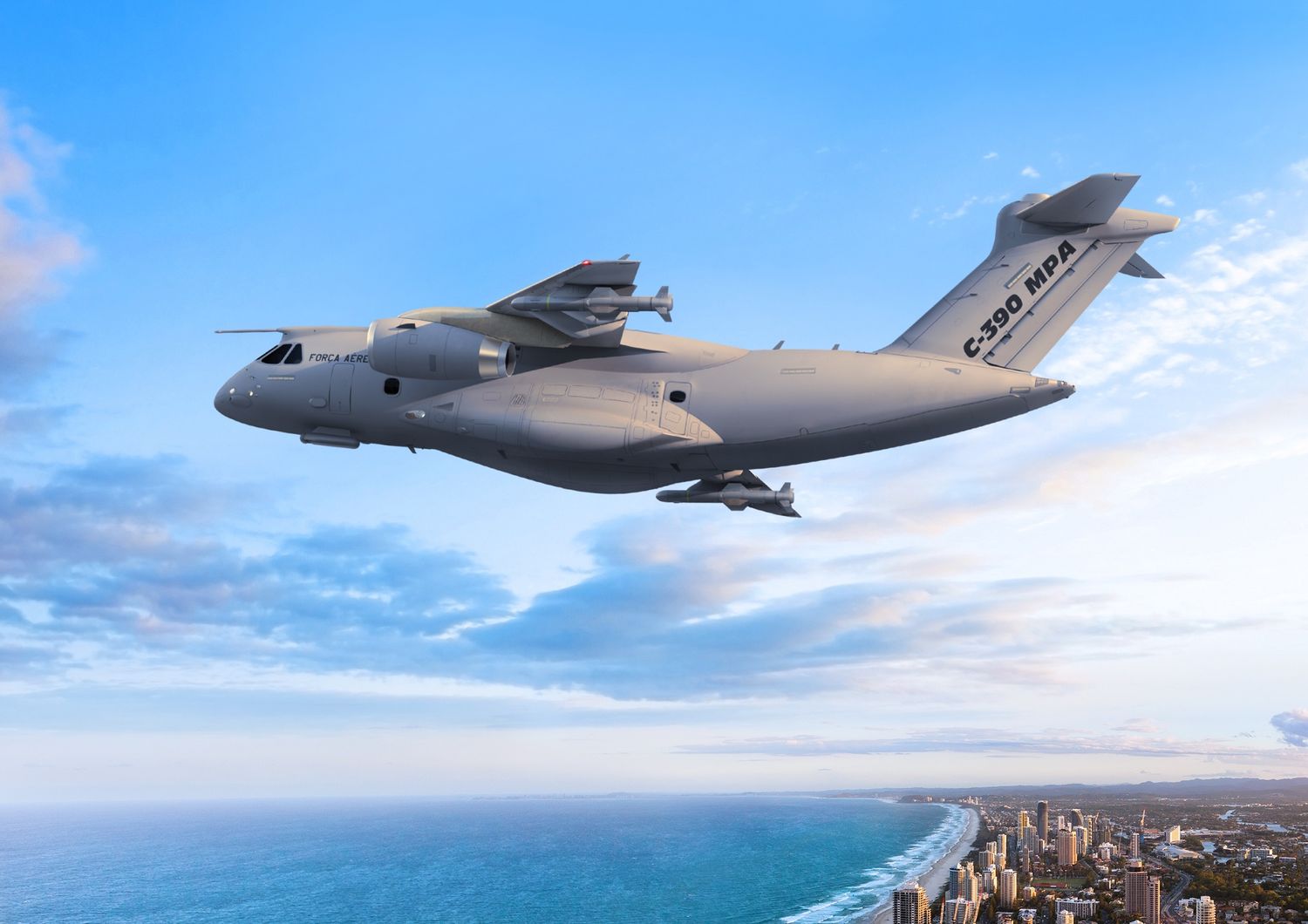Brazilian Air Force and Embraer are studying the development of the C-390 Millennium as a special mission platform
The studies will focus on the possible adaptation of platforms currently operational in the Brazilian Air Force (FAB) to enable them to perform Intelligence, Surveillance and Reconnaissance (ISR) missions. The Embraer C-390 Millennium could assume several special mission aircraft configurations.
During the 23rd edition of the International Air and Space Fair (FIDAE) Santiago de Chile, Embraer and the Brazilian Air Force (FAB) announced the start of collaborative studies to identify potential platform adaptations for Intelligence, Surveillance and Reconnaissance (ISR) missions. The aim is to optimize resources by implementing these new capabilities on platforms already in operation in the Brazilian Air Force, such as the C-390 Millennium.
«The Brazilian Air Force constantly monitors its ability to fully accomplish its missions in the current context, while looking ahead to future challenges and evolving technologies. Studying the adherence and adaptability of Embraer platforms to the future challenges of IVR (editor: Intelligence, Surveillance and Reconnaissance) missions is a natural way to maximize communality and technological autonomy,» says Air Force commander Lt. Gen. Marcelo Kanitz Damasceno.

«Embraer has a track record of success in adapting its platforms for different purposes. The joint studies will allow us to expand the portfolio of solutions to meet the operational needs of the FAB’s Intelligence, Surveillance and Reconnaissance missions and those of potential international customers. This is another important step in the long-term relationship between Embraer and the FAB,» says Bosco da Costa Junior, president and CEO of Embraer Defence & Security.
See also: “Contract of the Century”? Embraer and Mahindra partner to promote C-390 Millennium in India
While the FAB, logically, has several operational Embraer aircraft in its inventory, the C-390 Millennium (operational in the FAB in KC-390 version) offers obvious advantages for adaptation to various special mission configurations, given its long range, the volume of its cargo hold (which allows optimal exploitation of roll-on/roll-off mission modules) and its ability to carry external loads on wing pylons and under the forward fuselage. Many of these configurations may require little or no structural modifications, allowing the same aircraft to perform a SAR or ISR mission in the morning and an in-flight refueling sortie in the afternoon.


Comentarios
Para comentar, debés estar registrado
Por favor, iniciá sesión